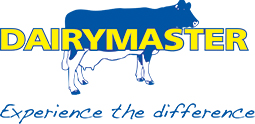Milk cooling is one of the highest energy uses on a dairy farm and can account for up to 40% of the farm’s electricity costs, followed by water heating at up to 30%.
With the availability of grant funding through TAMS II and finance readily available, now is the ideal time to be making an investment in a new milk tank.
There are several factors to consider when purchasing a new milk tank.
The best built tank
The basic construction of a modern milk storage tank is a dual-shell wall filled with an insulating material.
The inner shell includes one or more evaporator plates in the bottom through which refrigerant or chilled water is circulated.
The strength of the milk tank depends on the design of the chassis and how the legs are attached to the tank.
You should check that legs are not folded into the outer shell and that legs are not attached directly to the outer shell, as this will compromise the build quality.
Many tanks will have a mild steel supporting chassis which can cause problems over time – an all stainless-steel chassis will last much longer.
“The main reasons I bought a Dairymaster tank was that it’s structural quality is excellent, it was competitively priced, the backup service is superb and it also has extra features in comparison to competitor’s tanks,” comments dairy farmer, Dermot Browne.
Slash cooling costs
Milk cooling and water heating are one of the most significant costs on dairy farms. Milk cooling energy consumption in Ireland can be as high as 13.1W/L on many farms .
However, with a modern well-designed cooling and pre-cooling system, this could be reduced to as low as 4W/L.
Water heating energy consumption on farms is typically 9.8W/L – with a high efficiency heat recovery water heating system this could be reduced to 3.1W/L.
Cooling should be optimised to the level of milk in the tank. Look out for night mode functionality, which allows for further savings of up to 25% on annual cooling costs.
Some manufacturers custom design condensing units. For example, using larger and high-capacity condensers with capacity control.
This will have the benefit of increasing cooling capacity and – at the same time – reducing energy consumption giving a net gain of faster cooling at a lower cost.
Gordon Killen – who has a Dairymaster milk tank – said: “As soon as you are finished milking, 10 minutes later it’s cold; we’ve saved a lot of money on the cooling side of things.”
Washing you can rely on
Look for a tank that has a blockage free wash design with a high-capacity stainless steel wash pump, for a powerful spray that can complete a fast wash when necessary – in typically less than 30 minutes.
The wash water supply should be separate to the agitator to reduce the risk of gearbox failure.
Always use the detergents recommended by the tank manufacturer and an accurate detergent concentration, as it is critical for optimum cleaning.
Gordon added: “When I changed to a Dairymaster tank I couldn’t believe the washing. The wash itself was very thorough and it left the tank spotless. I’m not handling any detergents or acid, all I do is screw off the caps and put it on and the tank does the rest.”
Easy to use
Ideally, you want to be able to access the main tank functions with the minimum of difficulty. The main functions of cooling, washing and milk collection should be accessed easily.
Information buttons can also be very helpful giving easy access to temperature graphs, information and reports.
“I’m very happy with the Dairymaster tank, it cools very fast and efficiently. The front screen display is very informative and allows quick access to all my information.
“I can view litres, time, washing, when washing has started and when the tank was emptied etc. This information is essential for me to know and is just so simple to use,” said Richard Sweetnam – Dairymaster tank owner.
Peace of mind
Milk level detection is offered by some manufacturers which allows extremely low minimum cooling levels without freezing – for effective cooling during the off-peak season.
GSM modules are now offered as an option or as standard – on many models – allowing the user to communicate directly with the tank controls via their smartphone.
A battery back up is desirable to ensure communication still happens in the event of a power interruption.
Paul Deering – another Dairymaster milk tank owner – said: “I might rush off and it’s great to get a text if there’s an issue or if I forgot to put it cooling and then to be able to control it remotely. If it saves a load or two of milk, then it’s worth it straight away!”
Want free hot water?
Look for a heat recovery system that can recover all of the condensation heat generated from the cooling unit. This will allow you to heat water very quickly – to a minimum of 55°C.
Maurice Lynch said: “Since installing the Dairymaster SwiftCool Duo heat recovery, I have oceans of hot water; the system will have itself paid for within two years.
“Prior to installing, we were always short of hot water. Now, even with a hot wash of the tank in the mornings you can hot wash the parlour with it in the same day no problem.”
Who to talk to?
Dairymaster has a range of 54 different size options on the market – the only 100% Irish developed and manufactured tanks sold worldwide.
Talk to Dairymaster today at: 066-7131124 to get to get more information on the most efficient tank for your farm or just click here



